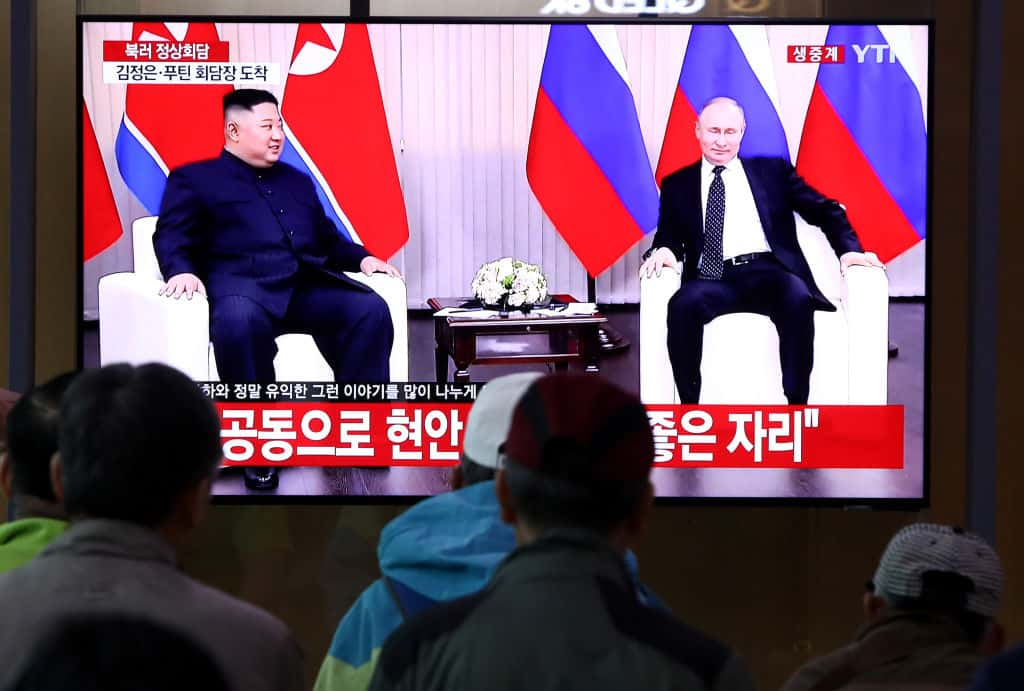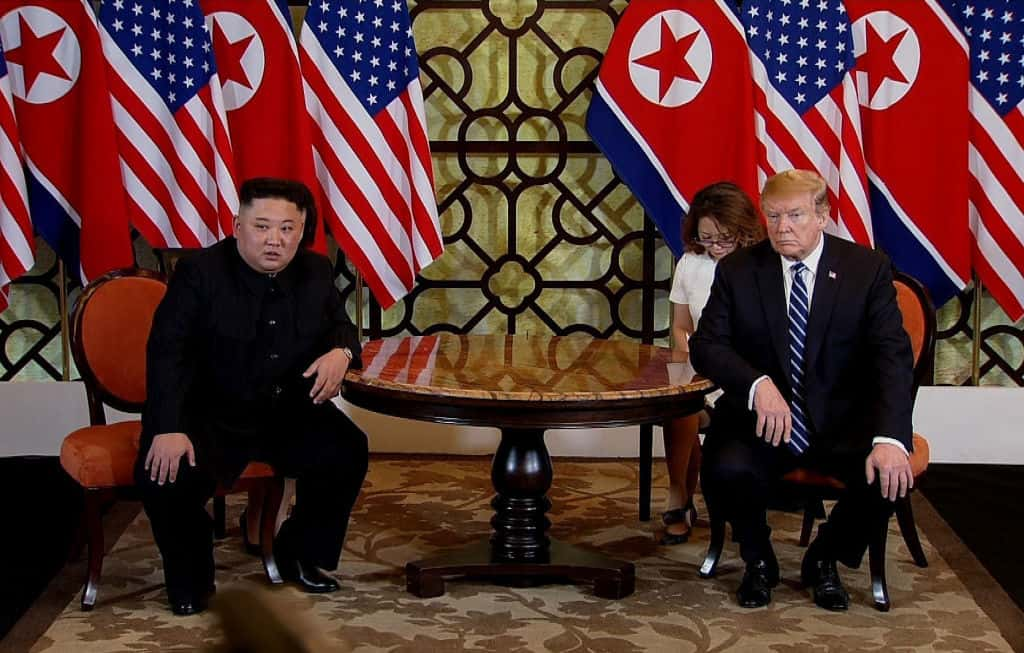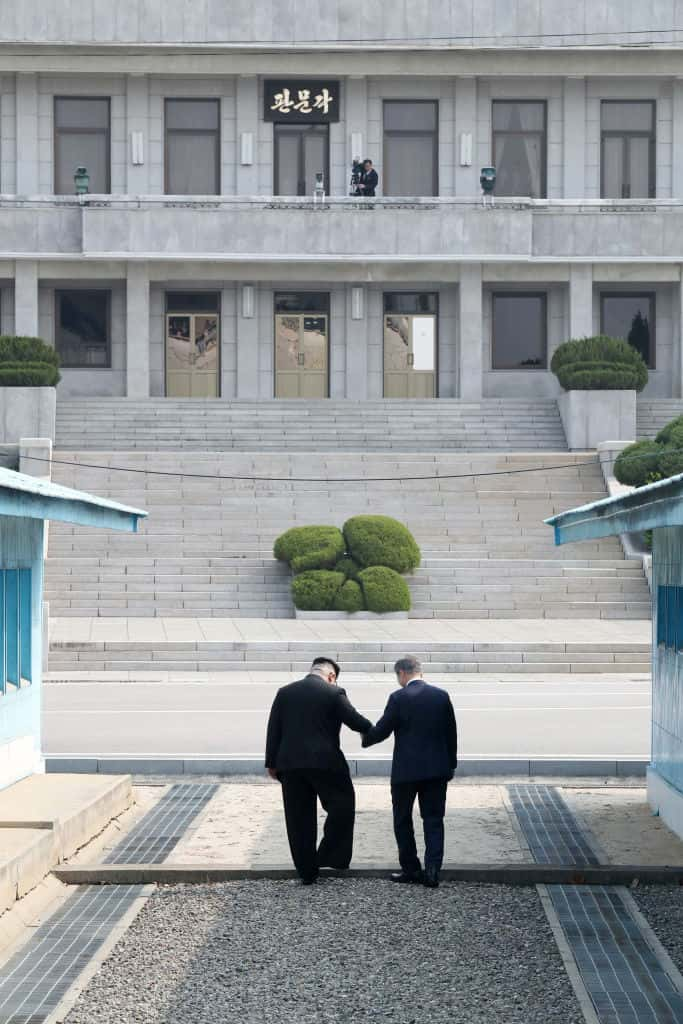With Kim Jong-un meeting Vladimir Putin, a new documentary unearths the forgotten Korean War and the notorious '38th Parallel North' division

North Korean Supremo Kim Jong-un met Russian strongman Vladimir Putin last week, opening a diplomatic line of communication between the two countries for the first time since he came to power in May 2016.
The meeting came shortly after the collapse of the Trump-Kim talks in Hanoi over Pyongyang's nuclear programme, which was also one of the top issues to be addressed in the summit.
While North Korea and Russia have had differing agendas for quite some time, they share a long history paved with multiple geopolitical events that changed the course of the world.

The Soviet Union was once a major ally of North Korea and provided the country with its initial nuclear know-how, apart from offering aid, economic co-operation, as well as cultural exchanges. But how far back do these formidable powers go? What was the role of the U.S. in North Korea's formation? While these questions are long forgotten, they have never been more pertinent than today, especially considering the international standoff over nuclear proliferation, and, of course, the hardline stance of U.S. President Donald Trump.
PBS documentary 'Korea: The Never-Ending War' encompasses the present and past of a dangerous conflict between powers that be, and why the Korean peninsula continues to play a critical role in geopolitics today. This conflict has often been underestimated, misunderstood, and misrepresented across modern history due to opposing narratives from those involved — yet it is instantly relevant today.

MEA WorldWide (MEAWW) sat down with writer and producer John Maggio to understand the magnitude of these events detailed in the documentary film.
"The political realities at the center of today’s current conflict mirror those faced in 1950. It’s a delicate and dangerous political chess game with the threat of nuclear war hanging over the entire world," Maggio told Meaww. "The Korean War was largely forgotten in this country, falling in the shadow of WWII and Vietnam, but the lessons of that war are never more important. This war is not officially over, and my hope is this film, told from the perspective of the men and women who fought and survived it, will shed new light on how we arrived here."

The Korean War lasted three full years from June 1950 to July 1953 and displayed the massive egos of certain larger-than-life personalities that led to the loss of over four million lives, historians estimate. This was the first war fought by the United Nations which saw Communist superpowers in direct battle against their Capitalist counterparts. Furthermore, it was the first time an American President (Harry S. Truman) sent troops into full-scale combat without a vote from Congress.
One of the most defining moments chronicled in the film is when U.S. military planners, under the leadership of President Truman, chose the latitude 38th Parallel North to divide the Korean peninsula between themselves and the U.S.S.R. (under Premier Joseph Stalin) post World War II.
Soviet Russian soldiers were moving southward and quickly taking control of Korean territories after the Japanese surrender. The United States, which was supposed to oversee the transition, realized they had to act quickly or risk losing the state to Stalin. So, with a decision that took merely 30 minutes to finalize, the U.S. proposed the 38th Parallel North as a line of control so the Soviets could be stopped from completely taking over the country.

"If you think about the drawing of the 38-degree parallel, it was just a line on a map which did not take into account the thousands of families that were divided by that line," Maggio said, rejecting the hasty latitudinal solution. "These powers created a civil war within the state. Families were divided. Cousins were fighting cousins. It was a deep emotional scar for these people."
"I consider the Korean War to be the result of a geopolitical chess game, and the Koreans were the pawns," he continued. "The Russians, the Chinese, and the Americans fought this proxy war on their land and created a rift among their people that continues to this day. It's a shame."

The Korean intervention became a model for the U.S. to become the world's policeman, especially after it boasted a huge defense budget, military bases around the world, and a large standing army.
'Korea: The Never-Ending War' beautifully details the major events that triggered North Korea's nuclear program, and how the stalemate eventually led to a sense of insecurity within the state — leading to the proliferation of nuclear weapons and ballistic missiles under Chairman Kim Jong-un. At the same time, it also explains how South Korea adopted a different approach and led its economic expansion after the war.

Despite recent diplomatic efforts, the U.S. still has warships deployed near the Korean peninsula and has also positioned an anti-missile system at South Korea. A lot has to be done before breaking any real ground, as the wounds are still fresh in the victims' memories.
In the words of narrator John Cho, "It was a war many Americans don't remember, and a war that Koreans can never forget."
'KOREA: The Never-Ending War' will premiere on Monday, April 29, 2019, 9–11 pm ET (check local listings) on PBS stations.